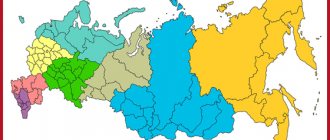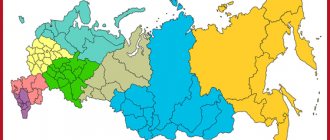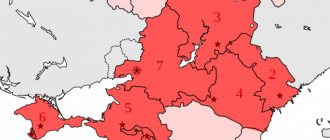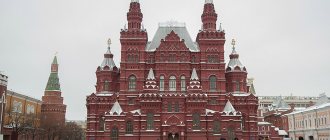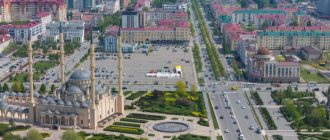Hello, dear colleague! To effectively participate in tenders (government procurement), it is necessary to narrow the search for information about ongoing tenders to a specific region or region.
Why do you need to do this? Firstly , the unified information system (www.zakupki.gov.ru) provides information on ongoing tenders in all constituent entities of the Russian Federation and tracking the emergence of new data in all regions is a labor-intensive and useless task; secondly , you need to take into account your capabilities (the company’s capabilities) to fulfill contractual obligations in the event of your victory. Suppose your company is located in Moscow, and the Customer is in the Sakhalin region, you yourself understand that these are additional costs for transportation, travel expenses, etc. Thirdly , the Customers themselves are quite skeptical about procurement participants (suppliers) from other regions and are doing everything possible to ensure that the contract goes to “their own”. Therefore, you need to clearly define for yourself where you will participate and not waste your time and energy on processing all the other information.
Below I have provided data on the federal districts and their constituent entities of the Russian Federation. I hope this information will be useful to you, because... this is the main navigation tool for searching information in the Unified Information System (UIS).
Kazan
History of Kazan
Recent excavations carried out on the territory of Kazan State University have shown that people began to settle in these places back in the Stone Age.
It is also known that already in the 3rd century BC. e. Finno-Ugric tribes appeared in the Middle Volga region - the distant ancestors of the peoples inhabiting northeastern Europe today. In the 10th-11th centuries, Bulgarian Turkic tribes migrated to these lands from the Northern Black Sea region and the Northern Caucasus. They settled on the left bank of the Volga, where they founded a state known as Volga Bulgaria. It was from this time that the history of Kazan began, built as a fortress city to protect the northern borders of the Bulgarian state. There are at least two dozen versions about the origin of the city’s name. But, as the most probable, two stand out, related to the terrain where it is located and its geographical location. They suggest that Kazan got its name from one of two Turkic words “kazan” (“cauldron”, “pit”) or “kash-an” (“border, edge”).
Kazan in the 18th century, engraving by F. Denis Ne
For centuries, Kazan was at the epicenter of historical events that transformed it from an ordinary border fortress into an influential, wealthy city. After the fall of Volga Bulgaria under the onslaught of Mongol-Tatar troops in 1236 and the annexation of this land to the Ulus of Jochi, better known as the Golden Horde, Kazan gradually assumed the role of the economic and political center of the region.
In 1438, during the collapse of the Golden Horde, the city was captured by the overthrown Golden Horde khan Ulug-Muhammad, marking the beginning of the existence of the independent Kazan Khanate, which owned vast territories. The Khanate had close economic ties with the Russian lands, but the agreements concluded were constantly violated by military actions: the khans raided the Russian principalities, and in response, the Russian armies ravaged their lands. This turbulent era ended in 1552, when an army of 150,000 led by Ivan the Terrible took Kazan by storm.
Kazan at the beginning of the 20th century
By order of the tsar, the Kazan Tatars were evicted outside the walls of the settlement, and entire settlements began to resettle the Russian people into the deserted city. The king also ordered the best craftsmen to be sent here to rebuild the city destroyed by the fighting.
Until the 17th century, Kazan, justifying its strategic position, lived the life of a military city: patrols replaced each other on its fortress walls, bridges were raised at night. But, as the borders of the Russian state moved to the East, Kazan lost its military significance, gradually turning into a large administrative and commercial city. In 1708, it became the capital of the Kazan province, and until the revolution of 1917 it was the commercial, trading, cultural and educational center of the Volga region.
Monument-chapel in honor of the capture of Kazan. 1894 Dmitrievsky Gate of the Kazan Kremlin in 1912 River School in the Admiralty Sloboda. 1917
Third Mountain Street in 1936
Dostoevsky Street in 1960
Decembrist Street 1986
In the 30s of the 20th century, Kazan entered the era of industrialization, which was accompanied by the expansion of the city's borders and an increase in its population. Today more than a million people live in Kazan. These are mainly Russians and Tatars; Chuvash, Mari, and Bashkirs have also lived here for a long time.
Kuibyshev Square in 1989
Sights of Kazan
Traveling around Kazan is an exciting and educational activity. You can go on a bus tour accompanied by an audio guide or explore the city on your own to leisurely explore its many architectural and cultural attractions, wander through the ancient streets, and sit in one of the cozy restaurants serving national cuisine. If you choose the second option, be sure to get a map or use a navigator. Kazan is a large city, the territory is conventionally divided into two parts: historical and modern. The ancient quarters are located in the central, Vakhitovsky district. It is here that the pride of the Republic of Tatarstan is located - the Kazan Kremlin, listed as a UNESCO World Heritage Site, as well as the Staro-Tatarskaya Sloboda, the pedestrian streets of Bauman and Kremlevskaya, beloved by tourists, old mosques and Orthodox churches, theaters and museums.
A modern city with high-rise buildings and shopping and entertainment centers is located on the opposite bank of the Kazanka. It is connected to the historical center by the Millennium Bridge and three dams.
Millennium Bridge in KazanKazan from above
Kazan Kremlin
Tourists usually begin their acquaintance with Kazan with an excursion to the Kazan Kremlin. This grandiose historical and architectural complex spreads over an area of 1,500 hectares and includes monuments from the 12th to 20th centuries. Typically, a sightseeing tour of the Kazan Kremlin lasts about an hour and a half, but to thoroughly explore all its sights, you will need to spend at least a whole day here.
Kazan Kremlin
The Kremlin was supposedly founded in the 10th century. At first it served as an outpost of the northern borders of Volga Bulgaria, and then became the center of the Kazan Khanate. In 1552, during the storming of Kazan by the troops of Ivan the Terrible, many of the stronghold's buildings were razed to the ground. During the restoration work that began immediately after the conquest of Kazan, the territory of the Kremlin was significantly expanded; instead of wooden defensive structures, stone ones were erected.
Today, at the entrance to the Kremlin, guests are greeted by the Spasskaya Tower, then the South-West, Bezymyannaya and Preobrazhenskaya towers open to the eye. Several more watchtowers are well preserved, and of some only the foundations remain.
Spasskaya Tower of the Kazan KremlinAnnunciation Cathedral
The brightest pearl in the ensemble of the Kazan Kremlin is the Annunciation Cathedral, the oldest building of the citadel. This magnificent church, built in the 16th century, was the cathedral church of the Kazan diocese for several centuries, until the 1917 revolution.
Among the oldest monuments of the Kremlin are the Palace Church, which today has become the Republican Historical Museum, and the Spaso-Preobrazhensky Monastery. Later buildings include the Governor's Palace, the Bishop's House, the Artillery (or Cannon) Yard, and the Junker School, where an exhibition was opened in 2005, where exhibits from the St. Petersburg Hermitage are displayed, and vernissages of contemporary artists are also held.
Palace Church
View of the Spaso-Preobrazhensky Monastery from Bauman Street
Governor's Palace Bishop's House
Cannon Yard
Junker school Syuyumbike Tower in Kazan
But historians are still arguing about when to date the construction of the Syuyumbike tower. This 58 m high structure, which is considered one of the architectural symbols of Kazan, is one of the “leaning towers”, as it has a pronounced vertical slope. It is located on a hill, from where a panoramic view of the Volga opens, which allows it to be called a guard, or sentinel, structure.
In the appearance of Syuyumbike, motifs of Tatar and Russian architecture of the 14th-17th centuries are intertwined. Its design clearly resembles the Borovitskaya and Spasskaya towers of the Moscow Kremlin, but some details and design contain oriental elements. It is assumed that the lower tiers of the tower could have been built back in the Khan’s period, but it is only documented that by the beginning of the 18th century the structure already stood on the territory of the Kazan Kremlin.
Within the walls of the citadel there are traces of buildings erected in the era preceding the conquest of the city by Russian troops: the ruins of the Khan's palace, discovered in 2000 during archaeological excavations, and the ruins of the mausoleum where the rulers were buried.
The main mosque of Tatarstan, Kul-Sharif, is located on the territory of the Kazan Kremlin. This is one of the largest Muslim temples in Europe, which is part of a large complex, which, in addition to the mosque, includes a museum, administrative buildings, a library, a publishing house, and a room for marriage ceremonies - nikah.
Kul Sharif Mosque
Kul Sharif Mosque inside
Kul Sharif is designed for 1,500 people, and the square in front of it can accommodate up to 10,000 people. Construction lasted from 1996 to 2005, the project was a recreation of the legendary mosque that stood on this territory during the time of the Kazan Khanate. True, what the ancient mosque, which had the status of a religious and educational center of the Middle Volga region, looked like is not known for certain, since it was destroyed during the assault on Kazan by the troops of Ivan the Terrible. When developing the architectural project, the ancient traditions of Tatar architecture and national symbols were taken into account. The luxurious interiors of the Kul Sharif mosque are made in accordance with 16th century technologies: alabaster, wood and stone were processed by hand. Granite, marble, serpentine, and onyx were used for the exterior decoration of the building itself.
As in ancient times, the Kazan Kremlin is the center of political life: here is the residence of the President of the Republic of Tatarstan, housed in the building of the Governor's Palace, the Central Election Commission, the Arbitration Court, and municipal government bodies.
On the territory of the Kremlin there are three observation platforms, from where magnificent views open up to the opposite bank of the Kazanka River, where tall modern buildings are built, and to the nearby architectural and historical sights of the city, among which the magnificent Peter and Paul Cathedral stands out.
Kazan Kremlin from above Tainitskaya Tower of the Kazan Kremlin
After sunset, when the iconic sights of Kazan take on an enchanting appearance thanks to spectacular lighting, a walk through the Kremlin seems especially romantic. If you want to get here in the evening, head towards the Spasskaya Tower. The entrance through its gates to the Kazan Kremlin is open around the clock.
You can enter the citadel through the gates of the Tainitskaya Tower, but they are open from 8:00 to 18:00 (October 1 - April 30), and from 8:00 to 22:00 (May 1 - September 30). There is no need to pay to enter the territory of the Kazan Kremlin, but if you want to visit the museums located here, you will have to buy separate tickets costing from 80 to 200 rubles.
Bauman Street
Sculpture of Zilant on Millennium Square in Kazan
Not far from the Kazan Kremlin is Millennium Square, where all major city holidays take place. From there, in the direction of the Staro-Tatarskaya Sloboda, the pedestrian Bauman Street stretches - a favorite walking place for townspeople and tourists. On both sides there are shops, cafes, and restaurants. Street concerts take place here, artists hone their skills, and there is a lively trade in souvenirs.
Walking along this ancient street, the same age as the Kazan Kremlin, you can admire the original monuments and beautiful buildings of the pre-revolutionary era.
Bauman street in Kazan
St. Nicholas Cathedral
At the very beginning of the street is the St. Nicholas Cathedral, which represents an entire architectural complex, which includes buildings from the 17th-19th centuries. Nearby, on the spot where the ruins of the famous Kazan Hotel stood for a long time, the Kazan Compound residential complex is located. The facade of the building, erected in the 19th century in the style of late classicism, was preserved, and today one can get an idea of what the hotel looked like, where such famous people as Vladimir Mayakovsky, Leon Trotsky, Maxim Gorky, Alexei Tolstoy stayed.
Next to the hotel there is a shopping and entertainment center. Its facade, made in the architectural tradition of the 19th century, organically fits into the architectural frame of the street.
Here you will see two interesting modern attractions: a bronze copy of the carriage presented by the authorities of Kazan to Empress Catherine II, who visited the city, and a monument to the Cat of Kazan - a sculptural personification of the cats that the residents of Kazan presented to the queen to hunt the mice that were bothering her in the Winter Palace.
Catherine II's carriage on Bauman Street
Kazan cat
Bell tower on Bauman street in Kazan
On Bauman Street there is the Avenue of Stars, where the names of famous representatives of the cultural sphere of the Republic of Tatarstan are engraved on gilded slabs, and the “Zero Meridian” is a stone-made indicator of the distance from the center of Kazan to other cities on the planet.
The architectural dominant of Bauman Street is the 70-meter red brick bell tower, amazingly decorated with geometric patterns. It was erected in the 19th century, and before the revolution it was the tallest building in the city. The bell tower is located a short distance from the Epiphany Cathedral, a magnificent sky-blue structure built in the Russian Baroque style. Near the temple there is a monument to Fyodor Chaliapin. A native of Kazan, he was baptized within the walls of the Epiphany Cathedral and sang in the church choir for some time.
Kremlevskaya street
Another historical street of Kazan, Kremlevskaya, runs parallel to Bauman Street. If the first is called “Kazan Arbat”, then the second can be compared with Nevsky Prospekt in St. Petersburg, the buildings located here look so aristocratic. One of them is the Alexander Passage, an architectural masterpiece of the 19th century. It was built as an apartment building and was famous for the luxury of its interiors. Next to it there is another beautiful building of the Chernoyarovsky passage, and not far away is the Peter and Paul Cathedral, its appearance reminiscent of a gingerbread house.
Kremlevskaya street
On Kremlevskaya Street there are the National Library and the National Museum of the Republic of Tatarstan. The museum's collections, located in the luxurious building of the former Gostiny Dvor, contain over 750 thousand exhibits preserving the history and culture of the Russian and Tatar peoples.
Kremlevskaya Street adjoins the Kazan University square, so it is always full of students. In the park itself there is a monument to the most famous student of this institution - V.I. Lenin.
Kazan University
National Museum of the Republic of Tatarstan
National Library of the Republic of Tatarstan
Staro-Tatarskaya Sloboda
Bauman and Kremlevskaya streets will lead you to the ancient district called Staro-Tatarskaya Sloboda. Its history dates back to 1552, when Ivan the Terrible ordered the Tatars to be evicted beyond the territory of the Kremlin settlement, to an area separated from the city by Lake Nizhny Kaban.
Over time, Muslim buildings grew here - mosques, madrassas, then handicraft production and trade were established, and estates of wealthy Tatar merchants appeared. Soon the settlement became one of the richest districts of Kazan. Russian merchants of the first and second guilds, scientists, writers, and doctors moved here.
Today here you can get acquainted with the architecture, traditions and culture of the Tatars, look into one of the national cuisine restaurants, buy original Tatar clothing and original jewelry. In the Staro-Tatarskaya Sloboda you will see charming wooden painted houses that carefully preserve the history of the indigenous inhabitants of Kazan, and the mansions of the local bourgeoisie.
It should be said that the construction of mosques was hampered by local authorities, which were influenced by the Orthodox clergy. And only after Catherine II visited Kazan in 1767, the situation changed. Even today the Tatars speak respectfully of “ebi-patsha” (“grandmother queen”), who allowed them to freely practice Islam and build mosques for joint prayers.
Al-Marjani Mosque
The most famous mosque of the Old Tatar Settlement is Al-Marjani. It became the first Muslim temple built of stone after the conquest of Kazan by Ivan the Terrible. Initially, it was called the First Parish, and from the end of the 18th century it began to be called Yunusovskaya, after the name of the industrialist and homeowner Ibrai Yunusov, who contributed significant funds to the construction of the building. The Yunusov family maintained the mosque for a long time. Their mansion, by the way, is also an architectural landmark of the Staro-Tatar Sloboda.
At the end of the 19th century, the mosque was named after the Tatar scientist and educator Shigabutdin Mardzhani, who from 1850 to 1889. was its imam-khatib (head). Its main architectural feature is the minaret, which rises directly from the roof. Outside and inside, the Al-Marjani mosque is decorated with stucco molding in the form of Tatar ornaments. During the years of Soviet power, it was the only functioning mosque in Kazan.
Chak-chak museum in the house of merchant Vafa Bigaev
In the beautiful house of the Tatar merchant Vafa Bigaev, built at the beginning of the 19th century, today there is a Museum of chak-chak - the most famous Tatar delicacy, which is prepared from dough and honey. In this original museum, you will immerse yourself in the atmosphere of comfort and hospitality of the Tatar home, and during the excursion, which is conducted in an easy, unobtrusive manner, you will learn not only about the intricacies of preparing the main Tatar sweet, but also about the history of the Tatars, their traditions and customs. Most of the museum exhibits date back to the 19th – early 20th centuries.
The tour ends with a tea ceremony with tasting of chak-chak and other oriental sweet delicacies. All kinds of Tatar sweets can be bought on the ground floor in a specialized shop. The museum is open from 10:00 to 20:00. The cost of the excursion is 350 rubles on weekdays and 400 rubles on weekends.
Lake Kaban, which once separated the Staro-Tatar settlement from the Kremlin settlement, is another one of the symbols of Kazan. Associated with it is the legend about the Khan's treasures, according to which, during the storming of the city by Ivan the Terrible, the untold wealth stored in the Khan's treasury was thrown into the lake waters, thus not reaching the Russian Tsar.
Staro-Tatarskaya Sloboda, view from Lake Nizhny Kaban
Even before the 1917 revolution, the lake was famous for its crystal clear water, there were plenty of fish in it, and townspeople rested on its shores. The development of industry has led to pollution of the reservoir. It remained silted until 1980, when work was carried out to clean up the reservoir.
Today, on the shore of Lake Kaban, there is a Rowing Sports Center, where rowing competitions were held during the 2013 Universiade. Now athletes continue to train here, improving in various types of rowing.
Palace Embankment
Citizens and guests of Kazan love to spend time on Palace Embankment. It is often called Fedoseevsky Park. It is especially pleasant to walk along the embankment of the Kazanka River on warm summer evenings, when the spectacular lighting turns on. Forged benches and illuminated fountains are installed here.
This spacious territory is a modern district of Kazan. By the millennium of the city, an elite cottage community was erected on an abandoned plot of land along the river, where elegant administrative buildings soon sprang up and a large park area was laid out. Today, wedding processions traditionally arrive at the square for photo sessions, and since 2011, a gala concert of the Kazan Autumn opera festival has been held here annually.
Palace Embankment and the Palace of Farmers
The old city and modern districts of Kazan are connected by the elegant Millennium Bridge. Many modern buildings and entertainment complexes have already been built in the Novo-Savinsky district, and construction does not stop here. The most outstanding landmark of this part of the city was the Wedding Palace, which received the name.
The building is a huge stylized cauldron resting on a white stone base. The author of the project, architect Dashi Namdakov, embodied the image of Kazan in his creation, emphasizing that the pillar of the city is the white stone Kremlin, and its spirit is the respectful attitude of the residents of Tatarstan to family values, their tolerance and hospitality, which is personified by the Kazan-chalice.
On the ground floor of the building there is a spacious hall. The design of its interiors tells the story of the centuries-old history of Kazan. The administration is located on the second floor, and on the third there are three marriage registration halls - Golden, Silver and Eastern.
On the fourth floor there is a two-level observation deck, from where you can admire Kazan from a bird's eye view.
Temple of all religions
In the vicinity of Kazan, in the village of Old Arakchino, there is a unique temple that united the main religions of the world under one canopy. Its ensemble includes an Orthodox church, a Muslim mosque, a Jewish synagogue, and a Buddhist pagoda. Construction began in 1992, and the ideological inspirer and author of the project was the artist, architect, sculptor, and public figure Ildar Khanov. After his death, the master's brother and sister continued the business.
Temple of all religions in Kazan
There are no religious services held here. People come here to get acquainted with the religion, history, culture, and traditions of peoples living in different parts of the planet. Today, the Temple of All Religions houses the Egyptian and Catholic halls, the Jesus Christ hall, and the Theater hall. Their interiors are decorated with works of monumental painting and decorative art. Work here continues, but a fire that occurred in April 2022 slowed down its progress.
Temple of all religions
The Temple of All Religions, one of the most unique attractions in Russia, is located in the village…
Kazan Kremlin
The Kazan Kremlin is a magnificent building located in the oldest part of the Republic of Tatarstan. He…
Kul Sharif Mosque
The Kul Sharif Mosque, located on the territory of the Kazan Kremlin, in the western part of this…
Bauman Street
Bauman Street is one of the oldest streets in Kazan, the pride of its residents and a place of pilgrimage for tourists...
Blue lakes in Kazan
Blue lakes in Kazan are a system of lakes on the territory of the Vysokogorsky district of the Republic of Tatarstan, and...
Tower Syuyumbike
The Syuyumbike Tower is a watchtower and at the same time the most extraordinary structure of the Kazan Kremlin,…
All sights of Kazan
Entertainment
Kazan is ready to receive guests at any time of the year. In summer it rarely gets too hot here; usually in the warmest month, July, the daytime temperature does not exceed +27 °C. In winter, even in the coldest month, January, as a rule, the thermometer does not drop below -14 °C, although, of course, there are exceptions - the night temperature can drop to -30 °C.
Winter in Kazan
In the summer, Kazan's parks are surrounded by greenery, the air is saturated with the aroma of flowering plants, fountains are turned on in city squares, jazz festivals are held on the streets, and there is nowhere for an apple to fall on the beaches.
Beach "Lokomotiv" in Kazan
In the very center of the city, 1 km from the Kremlevskaya metro station, on the banks of the Volga, there is the Lokomotiv beach. Thanks to its convenient location and good infrastructure, it is extremely popular among citizens, which, of course, is reflected in its environmental condition. But this does not stop lovers of sunbathing and swimming, and in hot weather they flock here from all over Kazan.
Those who prefer a more comfortable holiday should go to Riviera Beach. It is part of the infrastructure of the Kazanskaya Riviera hotel and entertainment complex, located on the banks of the Kazanka River. The area of this beach with golden clean sand includes an 80 m long swimming pool, several smaller pools, showers, changing rooms, sports and children's playgrounds. Around the pools there are pizzerias, pancake shops, kebab shops, cafes, and restaurants. In addition to the beach, the complex includes a four-star Riviera hotel, bars, a cinema, a fitness club and a water park, one of the largest in the world.
Riviera Beach
Aquapark
The water park has over 50 attractions, an open summer area, and a spa. There is a pool with artificial waves, a diving pool, and on the Flow Rider water attraction you can feel like a real surfer. The water park's steep slides are for adults who love water activities, and there are safe slopes for children. In addition, one of the water park attractions will allow kids to take part in the assault on a real pirate fort.
The spa area will appeal to all categories of vacationers - both those who decided to undergo wellness treatments and those who are ready to forever relax in the jacuzzi, leisurely sipping light drinks offered by the local bar. There is a Finnish sauna and a Turkish bath, from where you will leave full of strength and energy.
The water park is open from 9:00 to 23:00 on weekdays, and from 8:00 to 23:00 on weekends. The cost of visiting is from 450 rubles, children under 4 years old are admitted free of charge.
Ferris wheel "Around the World"
On the territory of the complex there is a Ferris wheel “Around the World” with a height of 65 meters. You can make an exciting “trip around the world” in 18 minutes, its cost is from 200 rubles for adults and from 100 rubles for children (cheaper on weekdays, more expensive on weekends and holidays). The price also rises in the evening, since at this time you have the chance to enjoy a stunning panorama of the city illuminated by millions of lights.
The Kazan Arena stadium is located not far from the Kazan Riviera. This huge stadium, capable of seating 45,400 spectators, is already ready to host the 2022 FIFA World Cup. In the meantime, football players of the local club “Rubin” train here, matches with their participation are held, and gala concerts are also held.
Kazan Arena StadiumTribunes
Guests of the city can not only admire the grandiose building, completely covered with glass, and having the largest media façade in Europe, but also have a great time at its entertainment and sports grounds. On the territory of the complex there is the Pioneer sports club, where you can practice the now fashionable CrossFit, as well as the X-fit fitness club. In a special area you can ride an inflatable sleigh; there are also tracks for go-karts and buggies.
Dinosaur exhibition "Yurkin Park"
The Kazan Arena hosts the country's largest dinosaur exhibition, Yurkin Park, where you will see giant monsters moving and making sounds. Children will have an interesting time in the KidsSpace themed club. Here you can go on an educational one-hour excursion to learn about interesting facts about the history of the structure, and visit places that are usually only accessible to athletes and officials.
In Kazan, it is worth visiting the Palladium restaurant, not only to enjoy excellent dishes, but also to relax in an unusual environment: the restaurant hall is located in the open air, and from its platform there is a view of the stadium stands and the emerald lawn, where various events take place every day. The restaurant has good music and you can dance and sing karaoke here.
A few kilometers from Kazan, dozens of comfortable sanatoriums and tourist centers await tourists. They are located in green pine forests, where the air is piercingly clean and the atmosphere is full of peace.
Recreation center Lebyazhye
Sanatorium Nehama
On the outskirts of the city there are also several fishing grounds, where campsites are set up for those who like to fish. The spring fishing season in the waters of the middle Volga begins in April, the summer season starts in early June, and in winter you can go fishing as soon as the river is reliably covered with ice.
Ski resort "Kazan"
In winter, there are many skating rinks with indoor and outdoor areas in Kazan. The ice rinks of the Sports Palace are very popular among the townspeople; the cost is from 100 rubles for 75 minutes. You can ride for free on the skating rink, which is being built next to the stadium of the Kazan Arena complex.
Fans of skiing and snowboarding can have a good time at the modern ski resort "Kazan", located 35 km from the city.
Cafes and restaurants
Kazan has a huge number of restaurants and cafes, where the entire culinary map of the world is presented, and the chefs scrupulously observe all the subtleties of preparing dishes. The city has many small cafes with original cuisine, hookah bars, tea houses, pancake bars, bistros, where prices are quite affordable. But every tourist, of course, wants to get acquainted with the national Tatar cuisine. In Kazan, traditional dishes are served both in budget establishments, reminiscent of Soviet canteens, and in pretentious ones, but rest assured, the food will be delicious in any case.
Kystyby
PeremyachBelish
Echpochmak
Katlama
Azu in Tatar Chak-chakGubadia
Talkysh Kaleve
The most popular cafes and restaurants among tourists are located on Bauman Street and the adjacent alleys. Quite European-looking cafes, bars, and establishments with a national flavor crowd each other here. The clear favorite among them is the “House of Tea”, located in an old building, opposite the “House of Tatar Cooking”, a very expensive restaurant, noted in all guidebooks as one of the most attractive establishments on Bauman Street.
"House of Tea" in Kazan
The “House of Tea”, or “Auchan”, as the townspeople call it, cannot boast of luxurious furnishings, but after spending 500-700 rubles for two, you will learn what real Tatar cuisine means. You will be treated to magnificent pilaf with lean lamb, the freshest flatbreads with all kinds of fillings, fried pies with juicy meat, rice with duck, and Kazan-style fried peas. The pastries here are excellent, especially those made from multi-layer dough. Desserts are accompanied by aromatic herbal tea.
The local chain “Dobraya Stolovaya” is popular in Kazan. Its establishments do not focus on national cuisine, but the food here is excellent and the prices are low. A full lunch, including first course, second course, pie and tea, will cost 150-200 rubles for two.
Hotels
There are quite a lot of budget hotels in Kazan, two- and three-star, where the cost of accommodation starts from 2,500 rubles per day. You can stay in a hostel for only 500 rubles.
Nice inexpensive hotels with Tatar flavor are located in Staro-Tatarskaya Sloboda. Tourists praise the Tatar Estate Hotel (3*). It's clean, cozy and comfortable here. Among its highlights are workshops where they offer cooking and pottery lessons. Cost of living – from 3800 rubles.
Room at the Riviera Hotel
Most four-star and five-star hotels are located in the historical part of Kazan. Among them are “Shalyapin Palace”, “Giuseppe”, “Korston”, “Mirage”. The cost of living in hotels of this level is from 4,000 rubles per room.
The Riviera Hotel (4*), part of the Kazanskaya Riviera entertainment complex, is also popular among city guests. Here you can stay in rooms of different levels of comfort - from 5,600 to 35,000 rubles. Despite the differences in price, all rooms here are elegantly furnished and superbly decorated. The price includes buffet breakfast. Hotel guests have free access to the beach with swimming pools and the water park.
Booking.com
How to get there
You can get to Kazan from different regions of Russia by plane, train, bus and by water. The international airport of the capital of Tatarstan accepts direct flights from most major cities of Russia, including from Moscow (flight time - 1 hour 30 minutes), St. Petersburg (about 2 hours 30 minutes).
You can get from the airport to the city center in half an hour by train (to the main station) or by bus No. 97. The fare starts from 30 rubles. For a taxi you will have to pay from 600 rubles.
Every day trains depart from the Kazansky station in Moscow to the capital of Tatarstan. The Tatarstan express train will take you to Kazan in 10 hours. By choosing another option, you can spend up to 19 hours on the road. Departing to Kazan from St. Petersburg, you will spend about 22 hours on the road.
From Moscow you can get to Kazan by comfortable express bus in 18 hours. The fare is 800 rubles. The journey from St. Petersburg will take at least a day and cost 2,000 rubles.
Cruise ships also travel to Kazan. From Moscow, ships travel to the capital of Tatarstan for 5 days, from St. Petersburg – 7-10 days.
Calendar of low prices for air tickets
Population
The population of the district according to Rosstat is 29,087,997 people. (2021). Population density - 28.05 people/km2 (2021). Urban population - 72.69% (2020).
National composition
Ethnic cards
Languages
The following groups and families predominate in terms of ethno-linguistic composition:
- Indo-European family - 20,438,608 people. (68.36%)
- Slavic group - 20,155,068 (67.41%)
- Armenian group - 108,777 (0.36%)
- Iranian group - 49,899 (0.17%)
- German group - 48,509 (0.16%)
- Indo-Aryan group - 28,761 (0.10%)
- Jews (Yiddish) - 20,968 (0.07%)
- Roman group - 16,464 (0.06%)
- Altai family - 6,932,428 (23.19%)
- Turkic group - 6,930,981 (23.18%)
- Ural family - 1,678,504 (5.61%)
- Finno-Ugric group - 1,678,377 (5.61%)
- North Caucasian family - 41,827 (0.14%)
- Dagestan group - 25,438 (0.09%)
- Nakh group - 13,980 (0.05%)
- Kartvelian family - 13,542 (0.05%)
- Koreans - 12,215 (0.04%)
- Austroasiatic family - 2,915 (0.01%)
Area and districts
The city of Nizhny Novgorod is divided into two parts by the Oka River. On the right are three districts: Prioksky, Nizhny Novgorod and Sovetsky. This is the so-called Upland part. On the left side of the Oka lies Zarechye. This part contains Sormovsky, Leninsky, Moskovsky, Kanavinsky and Avtozavodsky districts. From the north, the Volga River flows along the entire city.
The area of Nizhny Novgorod is, according to various estimates, from 410 to 466 square meters. km. The Nizhny Novgorod urban district includes thirteen other settlements, which is why the numbers vary so much.
Nizhny Novgorod: what federal district, area, population. Volga Federal District on News4Auto.ru.
Our life consists of everyday little things that in one way or another affect our well-being, mood and productivity. I didn’t get enough sleep - my head hurts; I drank coffee to improve the situation and cheer myself up - I became irritable. I really want to foresee everything, but I just can’t. Moreover, everyone around, as usual, gives advice: gluten in bread - don’t go near it, it will kill you; A chocolate bar in your pocket is a direct path to tooth loss. We collect the most popular questions about health, nutrition, diseases and give answers to them that will allow you to better understand what is good for your health.
The Volga Federal District ( VFD includes 15 constituent entities of the Russian Federation: the republics of Bashkortostan, Mari El, Mordovia, Tatarstan, Udmurtia, Chuvashia; Kirov, Nizhny Novgorod, Orenburg, Penza, Perm, Samara, Saratov, Ulyanovsk regions; Komi-Permyak Autonomous Okrug. The center of the district is the city of Nizhny Novgorod.
The Volga Federal District occupies 1038 thousand square meters. km.
The population of the region is 32,019 thousand people. The share of urban residents is 70.8%. The district contains five largest Russian cities with a population of more than 1 million: Nizhny Novgorod, Samara, Kazan, Ufa, Perm. Volga Federal District is one of the most multinational districts. It is home to Russians, Tatars, Bashkirs, Chuvashs, Udmurts, Mordovians, Maris, Komi-Permyaks - in total about 140 representatives of various nations, nationalities, and ethnic groups. 179 national and cultural autonomies are registered.
The region is rich in a variety of mineral resources. In addition to oil and gas reserves, which account for 13 and 2% of the total Russian reserves, respectively, unique reserves of potassium salts are concentrated here (about 96% of all explored resources of the country), large resources of phosphorites - 60%, zinc - 19%, copper - 16%, cement raw materials - 15%, silver - 14%, gold - 7%, mineral waters - 7%. The Volga Federal District has small deposits of nickel, chromium, lead, iron ores, titanium, alluvial diamonds, coal, as well as huge reserves of various raw materials for the production of building materials. Fuel resources are represented by oil, natural gas, oil shale, and peat.
The Volga Federal District is one of the leading in the country in terms of industrial development and one of the main agricultural regions of Russia, producing about 27% of agricultural products. A characteristic feature of the Volga region is a large proportion of enterprises of the military-industrial complex.
The most important industries in the region are the diversified, highly developed mechanical engineering and petrochemical complex. Mechanical engineering is represented in the district: transport - automotive, shipbuilding, aviation; precision and complex - instrument making, electrical engineering industry, electronic engineering, as well as machine tool building and tool industry, production of technological equipment for the petrochemical complex, tractor manufacturing and others.
There are 13 State Nature Reserves in the district:
Basegi, Reserve Bashkir Reserve Bolshaya Kokshaga Reserve Vishera Reserve Volga-Kama Reserve Zhigulevsky Kerzhensky Reserve Mordovian Reserve Nurgush Reserve Orenburg Reserve Volga forest-steppe Prisursky Reserve Shulgan-Tash Reserve
There are also 9 National Parks in the district: Bashkiria, Buzuluksky Bor National Park Mari Chodra National Park Nechkinsky National Nizhnyaya Kama National Park Samarskaya Luka National Smolny National Park Khvalynsky National Park Chavash Varmane National Park
There are also federal reserves in the district: Volga State Experimental Hunting Estate Zubovo-Polyansky State Experimental Hunting Estate Penza State Experimental Hunting Estate
***
City information
Nizhny Novgorod is located in the center of the European part of Russia at the confluence of two large rivers - the Volga and Oka. The favorable geographical location makes this place an important transport hub and shopping center. During its history, the city was destroyed several times, but each time it was reborn from the ashes, like a phoenix. It was and remains an important economic, cultural, and religious center of our country.
It is the center of the Nizhny Novgorod region and the administrative center of the Volga Federal District. This is why there is often confusion about Nizhny Novgorod - which federal district it is and which region it is. The city is the center of two municipalities.
Nizhny is also one of the key destinations for river tourism. Mountain tourism is also developed here, as there are numerous ski slopes in the region.
The coat of arms of Nizhny Novgorod was created in 1781. It is a heraldic shield depicting a deer with a crown on top. The coat of arms is framed around the perimeter by the ribbon of the Order of Lenin. The crown represents the development and achievements of the city, which has become an important cultural and political center in the region. The deer on the coat of arms of Nizhny Novgorod is a symbol of wisdom, purity, and sublimity. And the ribbon was actually given by Lenin to the city for its services.
History of the city's formation
Settlements in these places were formed by Finno-Ugric tribes, and then they were gradually replaced by the Slavs. The banks of the Volga were occupied by the villages of the Erzyans, belonging to the Mordovian ethnic group.
The city of Nizhny Novgorod was founded in 1921 by Russian Prince Yuri Vsevolodovich. A little over a hundred years later, the new urban formation became the capital of the Novgorod-Suzdal principality.
During the campaigns against Kazan, Nizhny Novgorod was an outpost, the last city when warriors were sent against enemies.
The role of the city in the Time of Troubles is important. The Nizhny Novgorod militia, led by Minin and Pozharsky, helped liberate Moscow from Polish invaders.
In 1714, as a result of the reforms of Peter I, Novgorod became a provincial city and began to develop rapidly. Under Alexander III, Nizhny became the center of Russian merchants. Then, in the 19th century, the largest fair of the Russian Empire was moved there, which made the city also a center of trade.
During Soviet times, Nizhny also began to rapidly develop its industry. It was then renamed Gorky. A large automobile plant was built - a real auto giant. Metalworking, mechanical engineering, and information technology enterprises were also founded.
